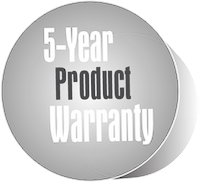MP3 Music Files are Fine for the Car Aren’t They?
MP3 Music Files are Fine for the Car Aren’t They?
There are an increasingly baffling number of Audio file types around these days; MP3, WMA, WAV, Flac, Ogg Vorbis, AAC, AAC Lossless to name but a few. Why? Well a lot has to do with a desire to carry more music around with us which can be listened to on many different types of mobile device from phone to portable music player to car radio and beyond. A second and contrary motivator is the growing desire for better sound quality. These contrasting requirements reflect a decision made by the average FOUR MASTER customer. FOUR MASTER customers have decided that average audio is not for them and have determined to do something to upgrade from factory fitted mediocrity to something which offers far more entertainment.
This summer we have spent a good deal of time speaking with customers about their music choices as well as their format of choice. Many have little or no idea of the implications of their choice of file type and most are simply led by the preferred format offered by their music provider (iTUnes, Amazon etc.). But what exactly is the difference and how does it affect the car audio listener? – This is a very big question and one to which we can only cast a cursory nod toward in a blog such as this.
Cmprssd or Uncompressed? – That is the Question
Not to be confused with audio compression where audio signals are “limited” in terms of the loudest and quietest sound that can be heard; sometimes deliberately for effect and sometimes to aid a musician (bass players, Nile Rodgers etc.) Digital compression is used to reduce the amount of information which needs to be processed to reproduce a sound or a piece of music. The idea is that “redundant” bits of information are removed from the digital code thus making the resulting file smaller. In the case of MP3 files versus WAV files (as used on CD’s) the compression factor is about 1:10 or in other words for every 10 bits of information in the WAV file, only 1 is saved. But this is over simplifying the process. With most data compression an attempt is made to rebuild the missing information using a mathematical algorithm. Some of these are incredibly sophisticated and work quite well however, some are truly dreadful and although a discernible tune can be reproduced, the result will lack mainly, in dynamic range.
So, What’s Dynamic Range all About?
Dynamic range refers to the difference between the loudest note before distortion sets in and the quietest note that is possible to be reproduced by a musical instrument or the equipment used to reproduce it. Good dynamic range should allow the high peak of a stabbed piano chord to be heard just as clearly as the quietest discernible residue of that same chord as it decays away to nothing (final chord of Day in the Life – Beatles, Sgt. Pepper). This is a deliberately devilish example as in fact, the measured dynamic range of a piano is about 104dB which is greater than the 96dB possible from a standard CD WAV file. Anyway, the point is that the sustain of a single note or cymbal hit and a lot of sound image height and depth information is a product of dynamic range. In digital compression, information that is thought (by a software writer) to not be important is marked as redundant and is discarded when the digital information is stored for later reproduction. In practice, there are digital compression techniques which would discard the sustain of a piano note if in the opinion of the software writer’s algorithm it would be masked or buried anyway by a coinciding cymbal hit. This all sounds very tidy and simple but the fact is that by throwing away the decay of a piano note or cymbal hit the resultant dynamic range of the sound or piece of music is adversely effected.
So, What Are We Saying?
If you have gone to the trouble of upgrading your car audio system, it seems such a shame to sully the results by playing inferior file formats on it. Without wishing to get in to trouble, We would say avoid MP3 files altogether and only use lossless AAC (Apple Lossless) files or better to get the most from your system and avoid it sounding flat and lifeless.
The best way to demonstrate the difference in dynamic range is to play a music lover an MP3 and lossless file of the same song at the same volume level through the same system. We guarantee that more foot tapping will take place when listening to the lossless format!
For more great Car Audio related articles, purchase Driving Sounds Magazine issue 3 here:




